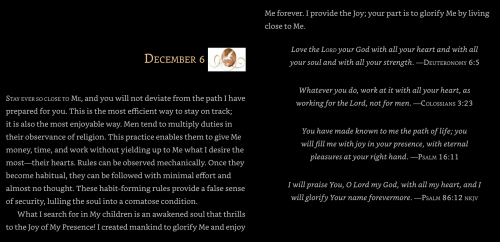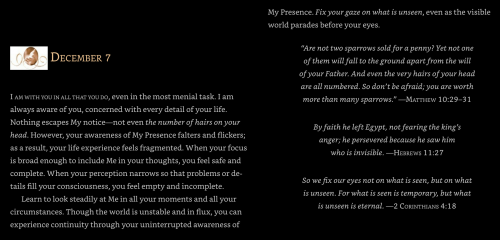Giving Birth to Christ
Christ
Is Born in Creation
Monday, December 7, 2020
Humanity too is God’s creation. But humanity alone is called to co-operate with God in the creation. —Hildegard of Bingen
For of his fullness we have all received, grace upon grace. —John 1:16
The Greek word for “fullness” in this gospel passage is pleroma, which Paul also uses in his writings to describe a historical unfolding (see Ephesians 1:23, 3:19; Colossians 2:9–10). It is an early hint of what we now call evolutionary development, the idea that history, humanity and, yes, even God are somehow growing and coming to a divine fullness. What hope and meaning this gives to all life!
In his letter to the church in Rome, Paul writes: “From the beginning until now, the entire creation, as we know, has been groaning in one great act of giving birth” (Romans 8:22). Creation did not happen at once by a flick of the divine hand, and it is not slowly winding down toward Armageddon or tragic Apocalypse. Creation is in fact a life-generating process that’s still happening and winding up! We now know the universe is still expanding—and at an ever-faster rate, which means that we are a part of creating God’s future.
As Sister Ilia Delio says so well,
We can read the history of our 13.7-billion-year-old universe as the rising up of Divine Love incarnate, which bursts forth in the person of Jesus, who reveals love’s urge toward wholeness through reconciliation, mercy, peace, and forgiveness. Jesus is the love of God incarnate, the wholemaker who shows the way of evolution toward unity in love. In Jesus, God breaks through and points us in a new direction; not one of chance or blindness but one of ever-deepening wholeness in love. In Jesus, God comes to us from the future to be our future. Those who follow Jesus are to become wholemakers, uniting what is scattered, creating a deeper unity in love. Christian life is a commitment to love, to give birth to God in one’s own life and to become midwives of divinity in this evolving cosmos. We are to be wholemakers of love in a world of change. [1]
The common Christian understanding that Jesus came to save us by a cosmic evacuation plan is really very individualistic, petty, and even egocentric. It demands no solidarity with anything except oneself. We whittled the great Good News down into what Jesus could do for us personally and privately, rather than celebrating God’s invitation to participate in God’s universal creative work.
Instead of believing that Jesus came to fulfill us separately, how about trusting that we are here to fulfill Christ? We take our small but wonderful part in what Thomas Merton calls “The General Dance.” [2] We are a part of this movement of an ever-growing Universal Christ that is coming to be in this “one great act of giving birth” (Romans 8:22).
Giving Birth to Christ
The
DNA of Creation
Sunday, December 6, 2020
Second Sunday of Advent
We Franciscans believe that the first coming of “the Christ” is in creation itself. The Franciscan philosopher and theologian John Duns Scotus (1266‒1308), whom I studied for four years, wrote that “God first wills Christ as his supreme work.” [1] Creation could not have been empty of Christ for billions of years. In other words, God’s “first idea” and priority was to make the Godself both visible and shareable. The word used in the Bible for this idea was Logos (from Greek philosophy), which I would translate as the “Blueprint” or Primordial Pattern for reality. The whole of creation is the beloved community, the partner in the divine dance. Everything is the “child of God”—not only Jesus. There are no exceptions. When you think of it, what else could anything be? All creation must in some way carry the divine DNA of the Creator.
At Christmastime, most people think about the birth of the baby Jesus as the “coming” of Christ. Yet Advent reveals more; it is about preparing ourselves for the Christ to come in personal, contracted, and visible form. Only a perfect, trusting individual could allow such greatness to focus and communicate through a human body. Modeling the entire divine pattern of incarnation, Mary had to trust littleness or, better said, bigness becoming littleness! Go imagine.
Mary could trustingly carry Jesus, because she knew how to receive spiritual gifts—in fact, the spiritual gift. She offers a profound image of how generativity and fruitfulness break into this world. We have much to learn from her.
First, we learn that we can’t manage, maneuver, or manipulate spiritual energy. It is a matter of letting go and receiving what is given freely. It is the gradual emptying of our attachment to our small “separate” self so that there is room for new conception and new birth. There must be some displacement before there can be any new “replacement”! Mary is the archetype of such self-displacement and surrender.
There is no mention of any moral worthiness, achievement, or preparedness in Mary, only humble trust and surrender. She gives us all, therefore, a bottomless hope in our own little state. If we ourselves try to “manage” God or manufacture our own worthiness by any performance principle whatsoever, we will never give birth to the Christ, but only more of ourselves.
Whenever the material and the spiritual coincide, there is the Christ. Jesus fully accepted that human-divine identity and walked it into history. Henceforth, the Christ “comes again” whenever we are able to see the spiritual and the material coexisting, in any moment, in any event, and in any person. All matter reveals Spirit, and Spirit needs matter to “show itself”! What I like to call the “Forever Coming of Christ” happens whenever and wherever we allow this to be utterly true for us. This is how God continually breaks into history.

